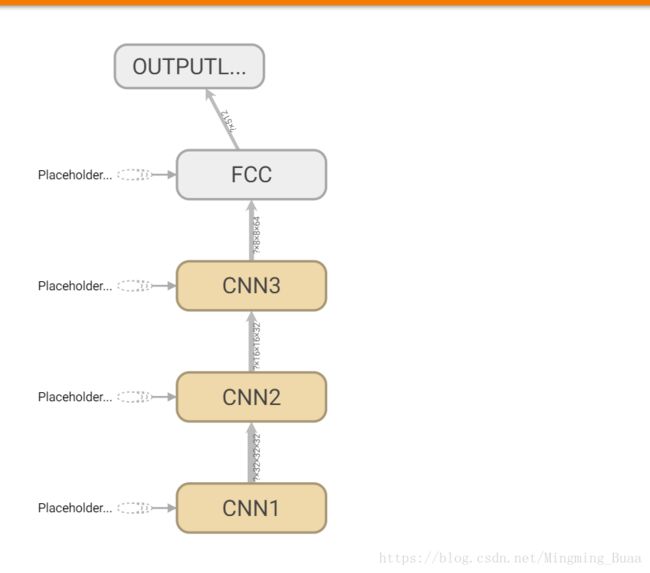用python+tensorflow让电脑认识你的脸
引入
深度神经网络已经应用在很多方面,同时图像识别是神经网络最具潜力的应用领域。本文将以人脸识别的demo为例,介绍神经网络在图像识别中的应用。
1.程序用到的库
(1)tensorflow:它是一个极其强大的神经网络库,对python有较好的支持。
(2)dlib:它是一款C++的开源工具包,可以进行人脸检测。
(3)open-cv:机器视觉领域极其强大的库,可以进行图像的处理。
(4)numpy:python的科学计算库。
2.必要的程序及库安装
(1)python3.x:建议通过anaconda进行安装。
(2)tensorflow:pip install tensorflow
(3)numpy:pip install numpy
(4)dlib:下载dlib的whl文件之后进行安装 pip install dlib-*****.whl
3.程序的具体实现
本程序的部分图像处理内容参考了http://tumumu.cn/的博客内容。
程序的数据集采用马萨诸塞大学阿默斯特分校发起的lfw(点这里下载数据集)项目收集的数据集。
1.录入自己的脸,准备数据集
collect_my_face.py
#导入库
import cv2
import dlib
import os
import sys
import random
#output_dir用来存放录入的脸部图片
output_dir="./my_faces"
#size最后的图片尺寸为size*size
size=64
if not os.path.exists(output_dir):
os.makedirs(output_dir)
def relight(img,light=1,bias=0):
#随机改变图片亮度,增加图片的多样性
w=img.shape[0]
h=img.shape[1]
for i in range(0,h):
for j in range(w):
for c in range(3):
tmp=int(img[j,i,c]*light+bias)
if tmp>255:
tmp=255
elif tmp<0:
tmp=0
img[j,i,c]=tmp
return img
detector=dlib.get_frontal_face_detector()
camera=cv2.VideoCapture(0)
index=int(input("输入录入断点:"))
while True:
if (index<=10000):
#录入10000张照片
print("Being processed picture %s"%index)
success,img=camera.read()
gray_img=cv2.cvtColor(img,cv2.COLOR_BGR2GRAY)
dets=detector(gray_img,1)
for i,d in enumerate(dets):
#针对识别出来的面部进行剪裁,并把尺寸调整成size*size
x1=d.top() if d.top() >0 else 0
y1=d.bottom() if d.bottom()>0 else 0
x2=d.left() if d.left()>0 else 0
y2=d.right() if d.right()>0 else 0
face=img[x1:y1,x2:y2]
face=relight(face,random.uniform(0.5,1.5),random.randint(-50,50))
face=cv2.resize(face,(size,size))
cv2.imshow("image",face)
cv2.imwrite(output_dir+"/"+str(index)+".jpg",face)
index+=1
key=cv2.waitKey(30)& 0xff
if key==27:
break2.数据集转化为batch
input_images_prepare.py
import os
import numpy as np
import cv2
class Read_Batch():
#定义Read_Batch类用以读取batch
def __init__(self,path,myface_dir_list=[],other_dir_list=[],batch_list=[],label_list=[]):
#类内参数初始化,myface_dir_list存放my_faces文件夹下的文件名
self.myface_dir_list=os.listdir(path+"my_faces")
self.other_dir_list=os.listdir(path+"other_faces")
#batch_list存放读取的batch
self.batch_list=batch_list
#myface_readed_location指向已经读取到的文件位置,防止下次读取batch的时候重复读取之前读过的图片
self.myface_readed_location=0
self.other_face_readed_location=0
self.path=path
#label_list存放图片的label
self.label_list=label_list
self.myface_len=len(self.myface_dir_list)
self.other_face_len=len(self.other_dir_list)
def read_my_face(self,size):
#读取my_faces文件夹下的图片,label信息为[1.0,0.0]
#Need pictures of my face to be stored under my_faces directory
for filename in self.myface_dir_list[self.myface_readed_location:]:
if filename.endswith(".jpg"):
img=cv2.imread(self.path+"my_faces"+"/"+filename)
img=np.array(img)/255.0
self.batch_list.append(img)
self.label_list.append([1.0,0.0])
size=size-1
if size==0:
return
if self.myface_readed_location1:
self.myface_readed_location+=1
else:
self.myface_readed_location=0
def read_other_face(self,size):
#读取其他人的脸部图片,label信息为[0.0,1.0]
for filename in self.other_dir_list[self.other_face_readed_location:]:
if filename.endswith(".jpg"):
img=cv2.imread(self.path+"other_faces"+"/"+filename)
self.batch_list.append(np.array(img)/255.0)
self.label_list.append([0.0,1.0])
size=size-1
if size==0:
return
if self.other_face_readed_location1:
self.other_face_readed_location+=1
else:
self.other_face_readed_location=0
def next_batch(self,batch_size):
#将batch_size的一半分给自己,一半分给他人
self.read_my_face(batch_size/2)
self.read_other_face(batch_size/2)
batch_list=self.batch_list[:]
label_list=self.label_list[:]
self.batch_list=[]
self.label_list=[]
return batch_list,label_list 3.训练神经网络
import build_network
import input_images_prepare as iip
import tensorflow as tf
import numpy as np
import os
size=64
def weight_variable(shape,name):
initial=tf.random_normal(shape,dtype=tf.float32,stddev=0.1)
return tf.Variable(initial,name=name)
def bias_variable(shape,name):
initial=tf.constant(0.0,tf.float32,shape)
return tf.Variable(initial,name=name)
def train_network():
xs=tf.placeholder(tf.float32,[None,size,size,3])
y_=tf.placeholder(tf.float32,shape=[None,2],name="y_label")
keep_prob_50=tf.placeholder(tf.float32)
keep_prob_75=tf.placeholder(tf.float32)
#First convolution layer
with tf.name_scope("CNN1"):
#定义卷积核,[2,2,3,32]表示卷积核的参数,第一个和第二个的2表示卷积的大小为2*2,之后的3表示通道,32表示卷积核的个数(其实这里的卷积核的大小应该是2*2*3)
conv1_weight=weight_variable([2,2,3,32],name="conv1_weight")
#定义卷积层的偏置
conv1_bias=bias_variable([32],"conv1_bias")
#第一层卷积,参数[1,1,1,1]表示卷积的步长,第一个1表示不跳过任何一个batch,第二第三个1表示不跳过任何一个像素点,第四个1表示不跳过任何一个通道。padding表示填充的方式,SAME表示卷积前后图像的大小不变
conv1=tf.nn.relu(tf.nn.conv2d(xs,conv1_weight,[1,1,1,1],padding="SAME")+conv1_bias)
maxpool1=tf.nn.max_pool(conv1,ksize=[1,2,2,1],strides=[1,2,2,1],padding="SAME")
dropout1=tf.nn.dropout(maxpool1,keep_prob_50)
#Second convolution layer
with tf.name_scope("CNN2"):
conv2_weight=weight_variable([2,2,32,32],"conv2_weight")
conv2_bias=bias_variable([32],"conv2_bias")
conv2=tf.nn.relu(tf.nn.conv2d(dropout1,conv2_weight,[1,1,1,1],padding="SAME")+conv2_bias)
maxpool2=tf.nn.max_pool(conv2,ksize=[1,2,2,1],strides=[1,2,2,1],padding="SAME")
dropout2=tf.nn.dropout(maxpool2,keep_prob_50)
#Third convolution layer
with tf.name_scope("CNN3"):
conv3_weight=weight_variable([3,3,32,64],"conv3_weight")
conv3_bias=bias_variable([64],"conv3_bias")
conv3=tf.nn.relu(tf.nn.conv2d(dropout2,conv3_weight,strides=[1,1,1,1],padding="SAME")+conv3_bias)
maxpool3=tf.nn.max_pool(conv3,ksize=[1,2,2,1],strides=[1,2,2,1],padding="SAME")
dropout3=tf.nn.dropout(maxpool3,keep_prob_75)
#Fully connectted layer
with tf.name_scope("FCC"):
fcc_weight=weight_variable([(size//8)*(size//8)*64,512],"fcc_weight")
fcc_bias=bias_variable([512],"fcc_bias")
dropout3_flat=tf.reshape(dropout3,[-1,(size//8)*(size//8)*64])
dense=tf.nn.relu(tf.matmul(dropout3_flat,fcc_weight)+fcc_bias)
dropout4=tf.nn.dropout(dense,keep_prob_75)
#Output layer
with tf.name_scope("OUTPUTLAYER"):
out_weight=weight_variable([512,2],"out_weight")
out_bias=bias_variable([2],"out_bias")
before_softmax=tf.add(tf.matmul(dropout4,out_weight),out_bias)
out=tf.nn.softmax(before_softmax,axis=1)
if not os.path.exists("save"):
os.makedirs("save")
sess=tf.Session()
writer = tf.summary.FileWriter("logs/", sess.graph)
with tf.name_scope("loss"):
#定义loss
cross_entropy=tf.reduce_mean(-y_*tf.log(out))
tf.summary.scalar("loss",cross_entropy)
with tf.name_scope("accuracy"):
#定义准确率
accuray=tf.reduce_mean(tf.cast(tf.equal(tf.argmax(out,1),tf.argmax(y_,1)),tf.float32))
tf.summary.scalar("accuracy",accuray)
#学习率1e-5,使用Adam优化
train_step=tf.train.AdamOptimizer(0.00001).minimize(cross_entropy)
saver=tf.train.Saver()
sess.run(tf.global_variables_initializer())
get_batch=iip.Read_Batch("./")
if os.path.exists("./save/checkpoint"):
saver.restore(sess,"./save/model.ckpt")
merged = tf.summary.merge_all()
for epoch in range(1000):
#训练网络
x,ys=get_batch.next_batch(1000)
if epoch%10 ==0:
#print(sess.run(out,feed_dict={xs:x,y_:ys,keep_prob_50:1.0,keep_prob_75:1.0}))
print(sess.run(accuray,feed_dict={xs:x,y_:ys,keep_prob_50:1.0,keep_prob_75:1.0}))
saver.save(sess,"./save/model.ckpt")
summary,_=sess.run([merged,train_step],feed_dict={xs:x,y_:ys,keep_prob_50:0.5,keep_prob_75:0.75})
#tensorboard写入数据
writer.add_summary(summary,epoch)
print("step %d finished"%(epoch+1))
if __name__=="__main__":
train_network()4.识别
recognition.py
import os
import tensorflow as tf
import cv2
import dlib
size=64
def weight_variable(shape,name):
initial=tf.random_normal(shape,dtype=tf.float32,stddev=0.1)
return tf.Variable(initial,name=name)
def bias_variable(shape,name):
initial=tf.constant(0.0,tf.float32,shape)
return tf.Variable(initial,name=name)
def recognition():
xs=tf.placeholder(tf.float32,[None,size,size,3])
#y_=tf.placeholder(tf.float32,[None,2])
keep_prob_50=tf.placeholder(tf.float32)
keep_prob_75=tf.placeholder(tf.float32)
#First convolution layer
#网络定义
with tf.name_scope("CNN1"):
conv1_weight=weight_variable([2,2,3,32],name="conv1_weight")
conv1_bias=bias_variable([32],"conv1_bias")
conv1=tf.nn.relu(tf.nn.conv2d(xs,conv1_weight,[1,1,1,1],padding="SAME")+conv1_bias)
maxpool1=tf.nn.max_pool(conv1,ksize=[1,2,2,1],strides=[1,2,2,1],padding="SAME")
dropout1=tf.nn.dropout(maxpool1,keep_prob_50)
#Second convolution layer
with tf.name_scope("CNN2"):
conv2_weight=weight_variable([2,2,32,32],"conv2_weight")
conv2_bias=bias_variable([32],"conv2_bias")
conv2=tf.nn.relu(tf.nn.conv2d(dropout1,conv2_weight,[1,1,1,1],padding="SAME")+conv2_bias)
maxpool2=tf.nn.max_pool(conv2,ksize=[1,2,2,1],strides=[1,2,2,1],padding="SAME")
dropout2=tf.nn.dropout(maxpool2,keep_prob_50)
#Third convolution layer
with tf.name_scope("CNN3"):
conv3_weight=weight_variable([3,3,32,64],"conv3_weight")
conv3_bias=bias_variable([64],"conv3_bias")
conv3=tf.nn.relu(tf.nn.conv2d(dropout2,conv3_weight,strides=[1,1,1,1],padding="SAME")+conv3_bias)
maxpool3=tf.nn.max_pool(conv3,ksize=[1,2,2,1],strides=[1,2,2,1],padding="SAME")
dropout3=tf.nn.dropout(maxpool3,keep_prob_75)
#Fully connectted layer
with tf.name_scope("FCC"):
fcc_weight=weight_variable([(size//8)*(size//8)*64,512],"fcc_weight")
fcc_bias=bias_variable([512],"fcc_bias")
dropout3_flat=tf.reshape(dropout3,[-1,(size//8)*(size//8)*64])
dense=tf.nn.relu(tf.matmul(dropout3_flat,fcc_weight)+fcc_bias)
dropout4=tf.nn.dropout(dense,keep_prob_75)
#Output layer
with tf.name_scope("OUTPUTLAYER"):
out_weight=weight_variable([512,2],"out_weight")
out_bias=bias_variable([2],"out_bias")
before_softmax=tf.add(tf.matmul(dropout4,out_weight),out_bias)
out=tf.nn.softmax(before_softmax,axis=1)
#result表示网络输出中最大项的位置,由于前面设定自己脸图片的label为[1.0,0.0],因此这里如果result为[0](第一个数为最大项),表明图片是自己的脸
result=tf.argmax(out,1)
flag=0
sess=tf.Session()
saver=tf.train.Saver()
#从文件中读取训练好的网络参数
saver.restore(sess,"./save/model.ckpt")
detector=dlib.get_frontal_face_detector()
camera=cv2.VideoCapture(0)
while True:
#用摄像头读取人脸,并将形状规整为size*size
success,img=camera.read()
gray_img=cv2.cvtColor(img,cv2.COLOR_BGR2GRAY)
dets=detector(gray_img,1)
for i,d in enumerate(dets):
x1=d.top() if d.top() >0 else 0
y1=d.bottom() if d.bottom()>0 else 0
x2=d.left() if d.left()>0 else 0
y2=d.right() if d.right()>0 else 0
face=img[x1:y1,x2:y2]
face=cv2.resize(face,(size,size))
cv2.imshow("image",face)
cv2.imwrite("./"+"1.jpg",face)
if sess.run(result,feed_dict={xs:[face/255.0],keep_prob_50:1.0,keep_prob_75:1.0})==[0]:
print("验证通过")
else:
print("验证未通过")
flag=1
if flag ==1:
break
key=cv2.waitKey(30)& 0xff
if key==27:
break
if __name__=="__main__":
recognition()